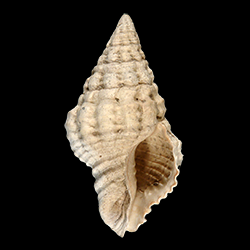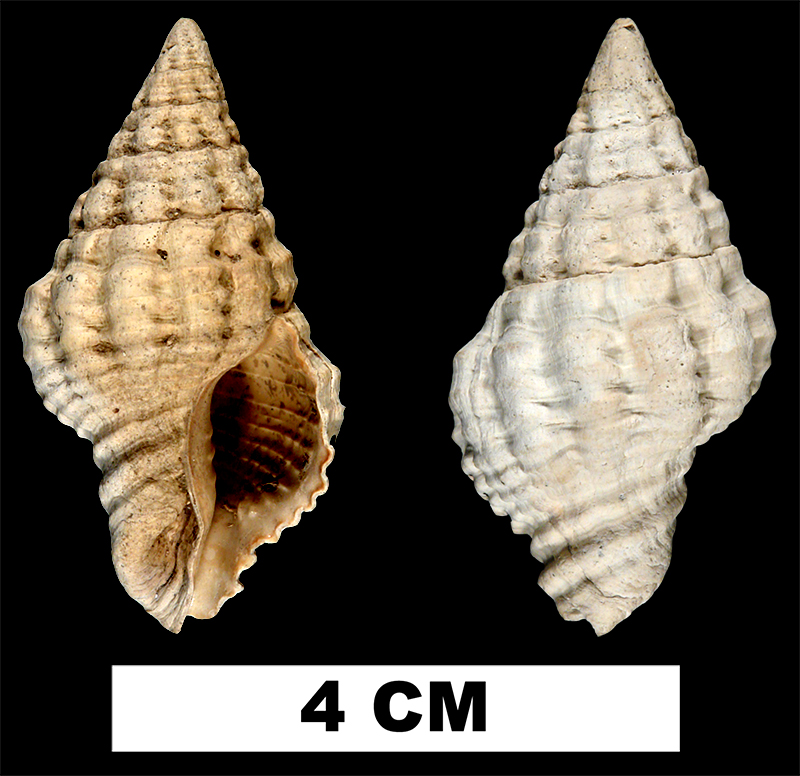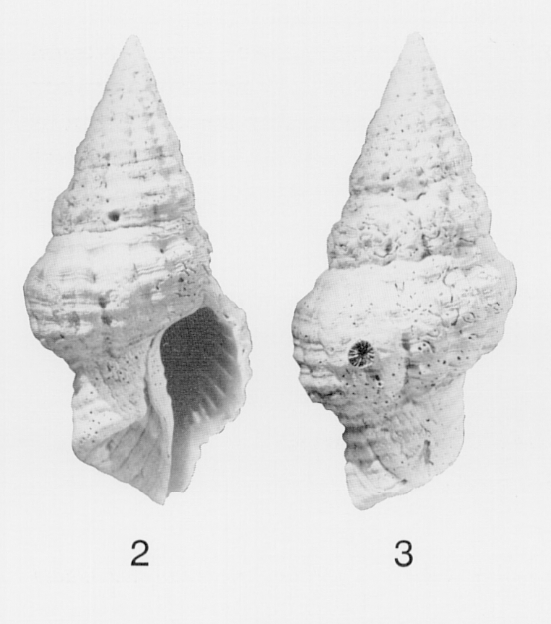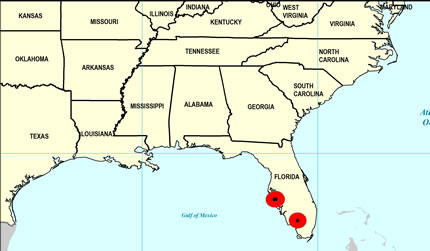
Hemipolygona nosali

- Phylum: Mollusca
- Class: Gastropoda
- Order: Neogastropoda
- Family: Fasciolariidae
- Genus: Hemipolygona
- Species: Hemipolygona nosali (Lyons, 1991)
Geological Range
Late Pliocene; Extinct.
Paleogeographic Distribution
Southern Florida.
Remarks
Original Description (from Lyons, 1991, p. 166-169):
"Description.--Shell solid, broadly fusiform, umbilicate, to approximately 65 mm long, 31.5 mm wide, with about 11 whorls. Protoconchs of all specimens eroded or absent; eroded remnants small, of no more than 2 whorls. Teleoconch whorls 8-9, with nearly straight sides, slightly constricted at sutures. Whorls of spire with 10-12 low, broad, slightly rounded axial ribs crossed by 2-3 spiral cords, cords separated by 1-2 spiral threads; swollen spiral band separating axial ribs from posterior suture of each whorl. Body whorl with 14-16 axial ribs crossed by 7 spiral cords, cords separated by 1-3 spiral threads; swollen spiral band at posterior suture overlain by 4-5 faint spiral threads. Siphonal canal short, broad, anteriorly truncate, with 4 oblique cords on dorsum, bordered ventrally along inner edge by thin, elevated lip; umbilicus deep, moderately to very wide. Aperture subovate, slightly constricted at anal sinus; outer lip crenulated by terminations of external spiral band and cords, with 8-9 strong lirae within; inner lip thin, elevated; columella straight, smooth, with 4 plicae emerging antero-obliquely from interior, posterior 2 plicae largest.
[...] Type locality.--APAC Mine, Sarasota County, Florida.
[...] Distribution.--Middle Pliocene; Tamiami Formation; known only from type locality.
Remarks.--Latirus nosali is the first species of Latirus s.s. that is known from middle Pliocene deposits of Florida. Although most specimens have been collected from spoil, several of the specimens were collected from in situ from Petuch's (1982b) Unit 7, indicating the material to be from the Pinecrest beds of the Tamiami Formation.
The 14-16 axial ribs on the body whorl of L. nosali are smaller, more closely spaced, and more numerous than are the 8-9 more prominent ribs of the late Pliocene species L. stephensae (described hereafter) and the Pleistocene to Recent species L. cariniferus (Lamarck). The swollen band near the posterior suture of L. nosali is absent in L. stephensae and L. cariniferus, which have, instead, relatively flat sutural ramps (Bullock 1974) overlain by faint spiral threads. The 7 spiral cords on the body whorl and the absence of a parietal tooth distinguish L. nosali from the large Pleistocene species L. (Polygona) maxwelli Pilsbry, which has 9-10 spiral cords and a prominent parietal tooth.
The projected maximum length of 65 mm is an approximation extrapolated from the largest specimen (FSBC F 39512), which has a broken spire tip. The width of the umbilicus is more pronounced in some specimens than in others. The umbilicus of each of the larger (>50 mm) specimens is very wide, but the umbilicus of the 32.1 mm specimen is relatively wider than are those of the other specimens 36.0-47.1 mm in length.
Etymology.--The species is named for Adam Nosal, who has facilitated access to the APAC Mine for countless fossil collectors."
To access this description in its original formatting through the University of Florida Digital Collections, click here.
Stratigraphic Occurrences
- Late Pliocene
- Tamiami Formation (Pinecrest Beds) (S. FL)


